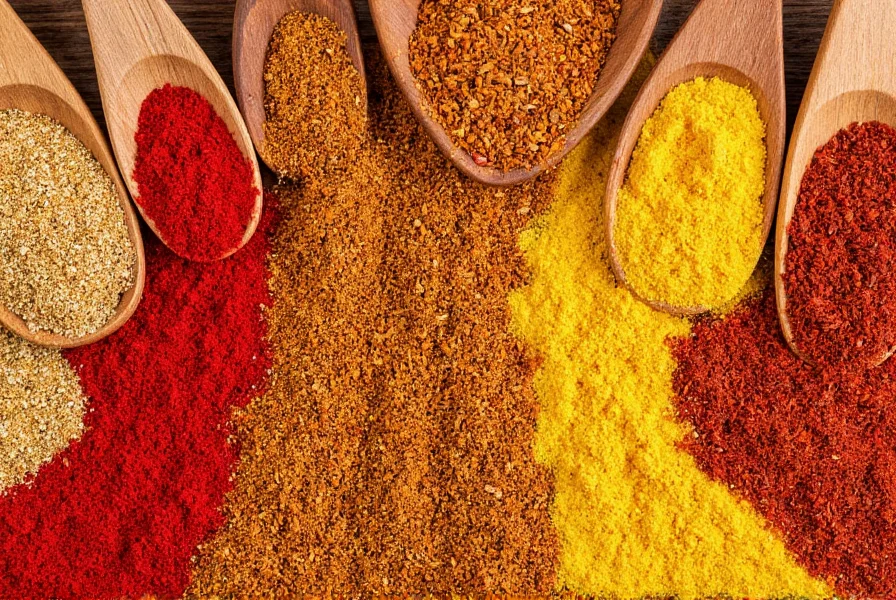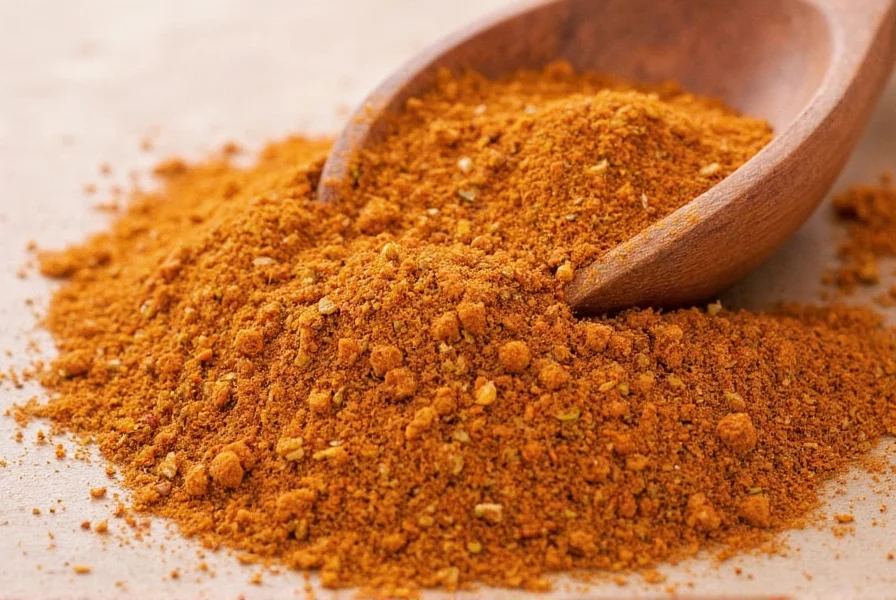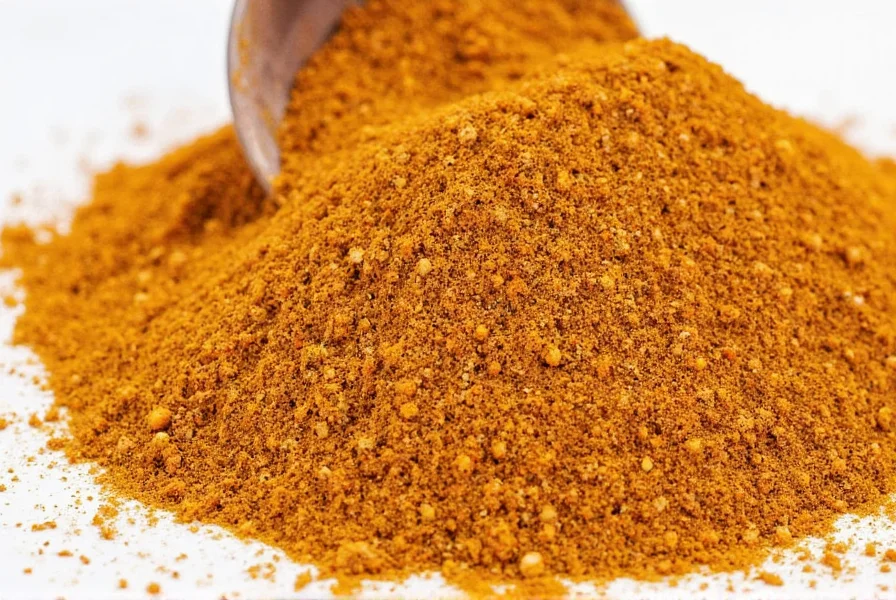Understanding what is curry seasoning requires exploring its composition, history, and culinary applications. Unlike single-ingredient spices, curry seasoning represents a carefully balanced mixture that varies by region and recipe but consistently delivers that signature curry flavor beloved worldwide.
Composition of Curry Seasoning
Curry seasoning isn't a single standardized recipe but rather a category of spice blends. The core ingredients typically include:
| Primary Ingredient | Flavor Profile | Percentage in Blend |
|---|---|---|
| Turmeric | Earthy, slightly bitter | 20-30% |
| Coriander | Citrusy, floral | 15-25% |
| Cumin | Warm, nutty | 10-20% |
| Fenugreek | Sweet, maple-like | 5-15% |
| Chili powder | Spicy, varying heat | 5-15% |
The exact proportions vary significantly depending on regional preferences and specific recipes. Some blends incorporate additional spices like cardamom, cloves, mustard seeds, or cinnamon to create distinctive flavor profiles.

Curry Seasoning vs. Curry Powder: Understanding the Difference
Many people wonder what is curry seasoning made of compared to curry powder. While the terms are often used interchangeably, subtle differences exist:
- Curry seasoning typically refers to a more complex blend with additional herbs and sometimes salt or other flavor enhancers
- Curry powder usually describes a simpler spice mixture focused primarily on the core spices without additional seasonings
- Commercial curry seasoning blends often contain anti-caking agents and salt, while pure curry powder contains only ground spices
When exploring how to use curry seasoning in cooking, understanding this distinction helps achieve the desired flavor profile in your dishes.
Historical Origins and Regional Variations
Despite common misconceptions, curry seasoning as we know it today isn't authentically Indian in its commercial form. The concept originated during British colonial rule in India when the British attempted to bottle the complex array of spices used in Indian cooking.
Regional variations include:
- Indian curry blends - Typically feature more complex spice combinations with regional specialties
- Thai curry pastes - Include fresh ingredients like lemongrass, galangal, and shrimp paste (different from dry curry seasoning)
- Japanese curry powder - Sweeter with apple and honey notes, often used in roux form
- Curry seasoning vs garam masala - Garam masala is a different Indian spice blend without turmeric, typically added at the end of cooking
Practical Applications in Cooking
Knowing what is curry seasoning good for transforms your cooking approach. This versatile blend works in numerous applications:
- Marinades - Combine with yogurt or oil for meats, tofu, or vegetables
- Soups and stews - Add depth to lentil soups, chickpea stews, and vegetable broths
- Rice dishes - Stir into rice during cooking for flavorful side dishes
- Roasted vegetables - Toss with root vegetables before roasting
- Homemade curry seasoning recipe - Create your own blend for fresher, more vibrant flavors
For best results, toast the curry seasoning in oil before adding liquids to your dish. This technique, called "blooming," releases the essential oils and intensifies the flavors.

Storage and Shelf Life
Proper storage maintains the potency of your curry seasoning. Store in an airtight container away from heat and light. Whole spices retain freshness longer than pre-ground blends. For optimal flavor, use within 6 months of opening, though properly stored blends remain safe indefinitely.
When making homemade curry seasoning, consider preparing smaller batches more frequently for the freshest flavor profile. The difference between freshly made and store-bought curry seasoning is remarkable in dishes where the spice blend takes center stage.
Substitutes and Alternatives
If you're wondering where to buy curry seasoning or need a substitute, several options exist:
- Create a basic blend using equal parts turmeric, coriander, and cumin with a pinch of chili powder
- Use garam masala with added turmeric (though the flavor profile differs)
- Combine curry powder with additional herbs like cilantro or parsley for "seasoning" qualities
- For quick fixes, use pre-made curry paste diluted with water (adjusting for liquid content in your recipe)
Understanding these alternatives proves valuable when exploring what is curry seasoning used for in various culinary contexts.
FAQ
Is curry seasoning the same as curry powder?
No, curry seasoning typically contains additional herbs and sometimes salt or other flavor enhancers beyond the basic spice blend found in curry powder. Curry powder usually refers to a simpler mixture of ground spices without additional seasonings.
What gives curry seasoning its yellow color?
Turmeric is the primary ingredient responsible for curry seasoning's characteristic yellow-orange color. This spice contains curcumin, which provides both the vibrant color and many of curry's purported health benefits.
Can I make my own curry seasoning at home?
Yes, creating homemade curry seasoning allows you to control ingredients and freshness. A basic blend combines turmeric, coriander, cumin, fenugreek, and chili powder in varying proportions based on your preferred flavor profile and heat level.
How much curry seasoning should I use in a recipe?
Start with 1-2 teaspoons per serving and adjust to taste. Since curry seasoning blends vary in potency, it's best to add gradually, tasting as you cook. Remember that flavors intensify as dishes simmer, so you can always add more but cannot remove excess.
Is curry seasoning spicy?
Not necessarily. While some curry seasoning blends include chili powder for heat, many traditional blends focus on aromatic spices rather than spiciness. The level of heat varies significantly between brands and regional variations, so check ingredients if you're sensitive to spice.











 浙公网安备
33010002000092号
浙公网安备
33010002000092号 浙B2-20120091-4
浙B2-20120091-4